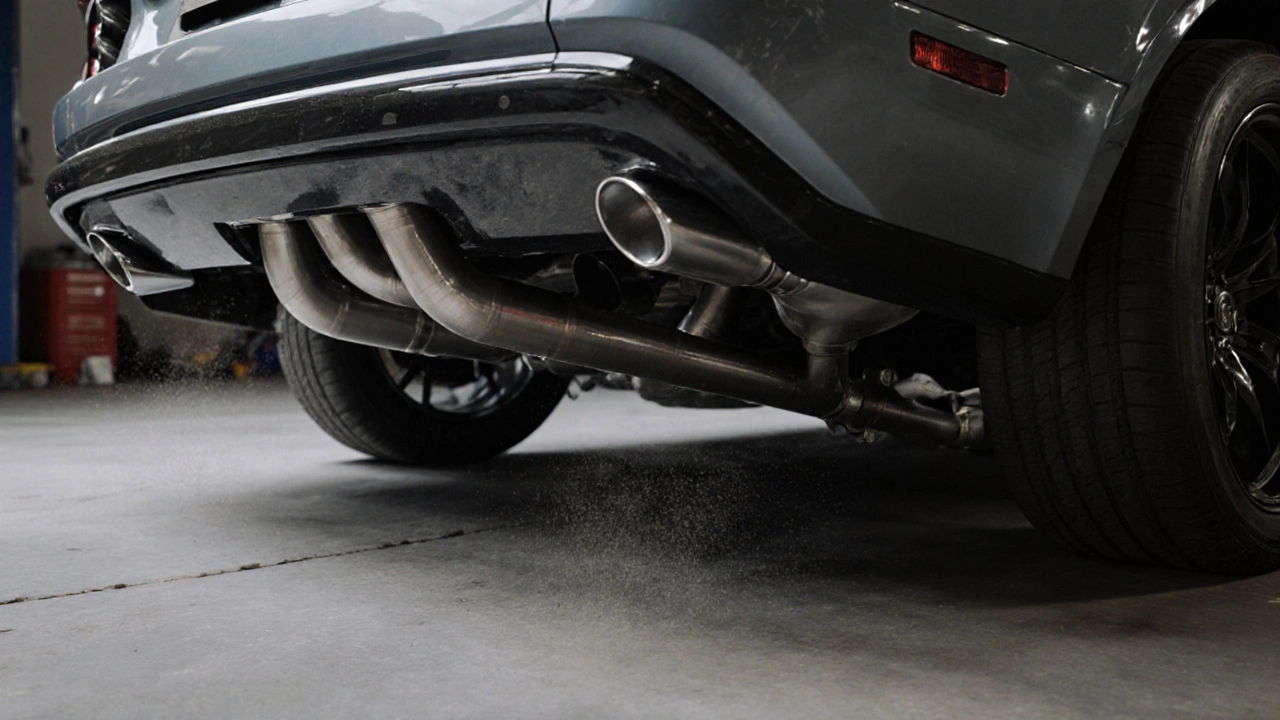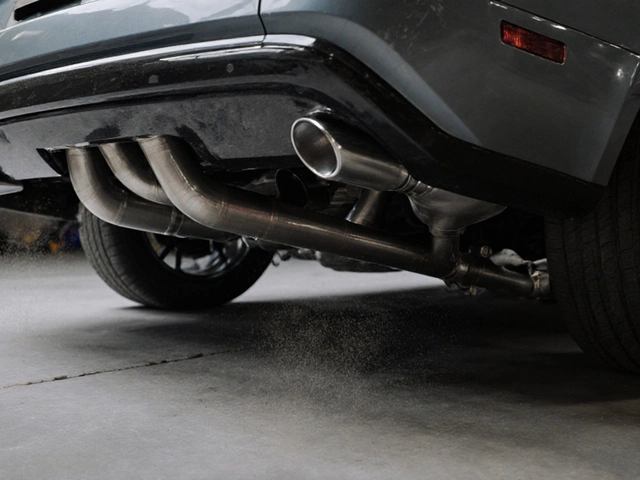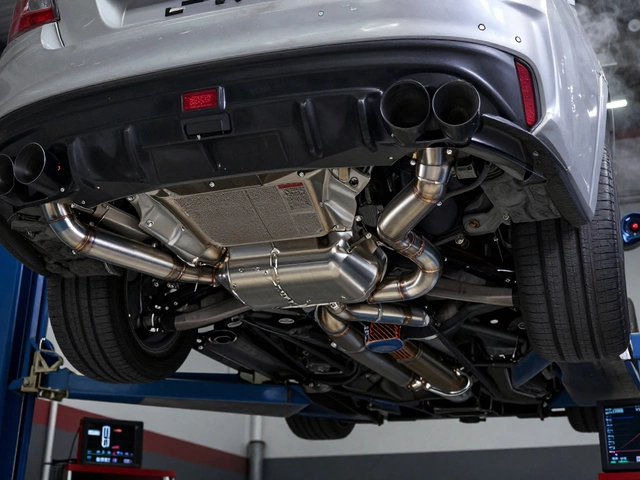Straight Pipe Exhaust Calculator
When you hear car enthusiasts shout about a straight pipe exhaust, you might picture a sleek, unadorned pipe jutting out of the muffler back. But what does that actually mean for the car’s engine, sound, and legality? This guide breaks down the concept, the engineering trade‑offs, and the practical implications you need to know before you pop a straight pipe on your ride.
Defining a Straight Pipe Exhaust
Straight pipe exhaust is a type of exhaust system that replaces the factory muffler, resonator, and often the catalytic converter with a single, uninterrupted pipe that runs straight from the exhaust manifold to the tailpipe. In other words, there are no sound‑dampening chambers or emissions‑control devices in the flow path. The result is a free‑flowing exhaust that maximizes the volume of gases exiting the engine.
How Exhaust Flow Works
Every internal combustion engine pushes exhaust gases out through a series of components: header, catalytic converter, muffler, resonator, and tailpipe. Each piece adds resistance, or backpressure, which the engine must overcome to expel gases. While a certain amount of backpressure can help low‑rpm torque, excess resistance reduces horsepower and can raise exhaust gas temperature.
- Header: Collects gases from each cylinder and directs them into a single stream.
- Catalytic converter: Uses a honeycomb of ceramic cells coated with platinum‑group metals to convert harmful CO, HC, and NOx into CO₂, H₂O, and N₂.
- Muffler: Contains chambers and perforated tubes that cancel sound waves, lowering the audible volume.
- Resonator: Fine‑tunes the frequency of the exhaust note, often reducing drone at certain RPM ranges.
By stripping away the muffler, resonator, and often the catalytic converter, a straight pipe reduces the total flow resistance dramatically.
Performance Impact: Power vs. Torque
Removing restrictive components can boost peak horsepower, especially at higher RPMs where the engine breathes harder. Independent dyno tests from reputable shops in Melbourne and Sydney show gains of 5‑15% in peak power for naturally aspirated V8s when a straight pipe is installed. However, the trade‑off is a loss of low‑end torque because the engine no longer benefits from the slight suction effect created by a muffler’s internal geometry.
For turbocharged or supercharged engines, the gain can be even more pronounced because the turbo’s spool is less hampered by backpressure. Still, the improvement is highly dependent on the engine’s displacement, cam profile, and existing tuning.
Sound Characteristics: From Decibel to Drone
A straight pipe produces an unfiltered exhaust note that can range from 95 dB on a four‑cylinder to over 110 dB on a V8. The sound is sharp, metallic, and often described as a “rasp” because there’s no muffling material to soften high‑frequency pulses. While many owners love the aggressive roar, the lack of a resonator can cause a constant drone at highway speeds, which can become tiring on long trips.
Additionally, the exposed exhaust can amplify the “exhaust crack” phenomenon, where combustion gases ignite in the exhaust pipe, creating sharp pops on deceleration. This is a side effect of higher exhaust temperatures and lower pressure, not a fault.
Legal and Emissions Considerations
In Australia, the Australian Design Rules (ADRs) require all road‑worthy vehicles to retain a functioning catalytic converter and meet specific noise limits (usually 95 dB measured at a set distance). A straight pipe that removes the cat‑converter will fail a roadworthiness inspection and expose the owner to fines of up to $1,200 per violation. The same applies in most US states where emissions testing is mandatory.
If you plan to keep the vehicle street‑legal, you can opt for a “cat‑back” straight pipe-a pipe that replaces the muffler and resonator but leaves the catalytic converter in place. This maintains compliance while still offering a noticeable performance and sound boost.
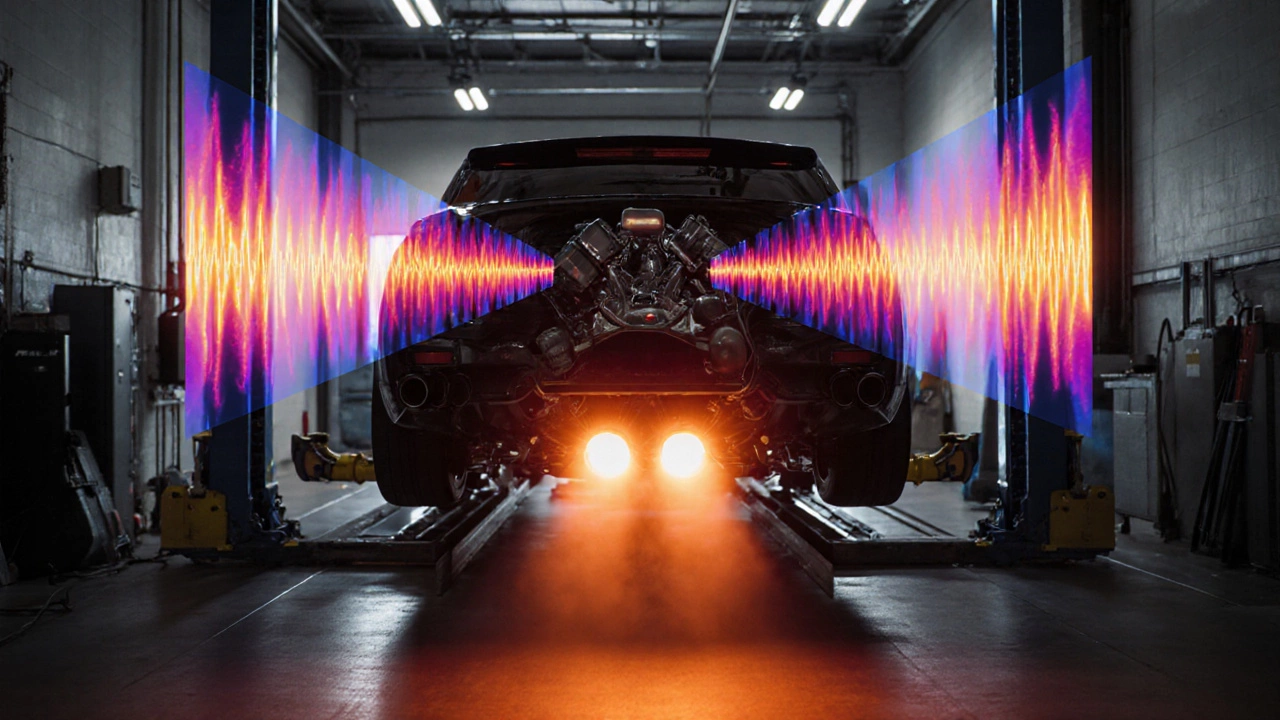
Choosing the Right Pipe Diameter and Material
Pipe diameter (measured in inches) directly influences flow. A rule of thumb used by performance shops is to size the pipe about 1.5‑2 times the diameter of the engine’s exhaust ports. For a 4.0‑liter V6, a 2.5‑inch pipe is common; for a 6.0‑liter V8, 3‑inch or larger is typical. Too large a pipe can reduce exhaust gas velocity, hurting low‑rpm torque, while too small a pipe can create unnecessary backpressure.
Material choice also matters. Stainless‑steel (304 or 409) offers corrosion resistance and a bright finish, while titanium provides weight savings and a higher‑pitch sound. In high‑performance applications, mandrel‑bent tubing is preferred over crushed bends because it maintains a consistent internal diameter, preserving flow efficiency.
Installation Basics and Common Pitfalls
Installing a straight pipe is relatively straightforward but requires attention to fitment and safety:
- Raise the vehicle and secure it on jack stands.
- Remove the stock muffler, resonator, and (if legal) catalytic converter.
- Measure the distance between the exhaust header outlet and the tailpipe opening.
- Cut the straight pipe to length, allowing a few inches for trimming.
- Use a pipe cutter or a band‑saw with a fine blade to avoid deformation.
- Fit the pipe using either a slip‑on flange or clamp‑style flange. Ensure a tight seal to prevent leaks.
- Torque all bolts to the vehicle manufacturer’s specification, typically 35‑45 Nm.
- Lower the car, start the engine, and listen for any leaks or rattles.
Common mistakes include:
- Choosing a pipe that’s too short, causing the exhaust to contact the undercarriage.
- Neglecting heat shielding, which can damage nearby components.
- Skipping a proper gasket, leading to exhaust leaks that trigger the Check Engine Light.
Comparing Exhaust Options
| System | Backpressure | Power Gain | Sound Level | Legal (AU) |
|---|---|---|---|---|
| OEM Stock | Medium | 0 % (baseline) | 70 dB | ✔️ |
| Cat‑back | Low‑Medium | +5‑10 % | 85‑95 dB | ✔️ (cat retained) |
| Axle‑back | Low | +8‑12 % | 90‑105 dB | ⚠️ (often cat removed) |
| Straight Pipe (no cat) | Very Low | +10‑15 % | 100‑115 dB | ❌ (illegal for road) |
These figures are averages from dyno testing and on‑road sound meters. Your actual results will vary based on engine size, tuning, and driving style.
Maintenance Tips for a Straight Pipe
Without a muffler’s internal baffles, a straight pipe can collect soot and carbon deposits more quickly. Periodic cleaning helps maintain flow:
- Inspect the inside of the pipe every 5 000 km using a flexible inspection camera.
- Use a low‑pressure air blast to clear loose carbon.
- Apply a high‑temperature stainless‑steel cleaner if buildup is heavy.
Also, keep an eye on the Check Engine Light. If the O₂ sensor detects abnormal exhaust composition because the catalytic converter is missing, the ECU may set a fault code (P0420) that can affect fuel economy and engine timing.
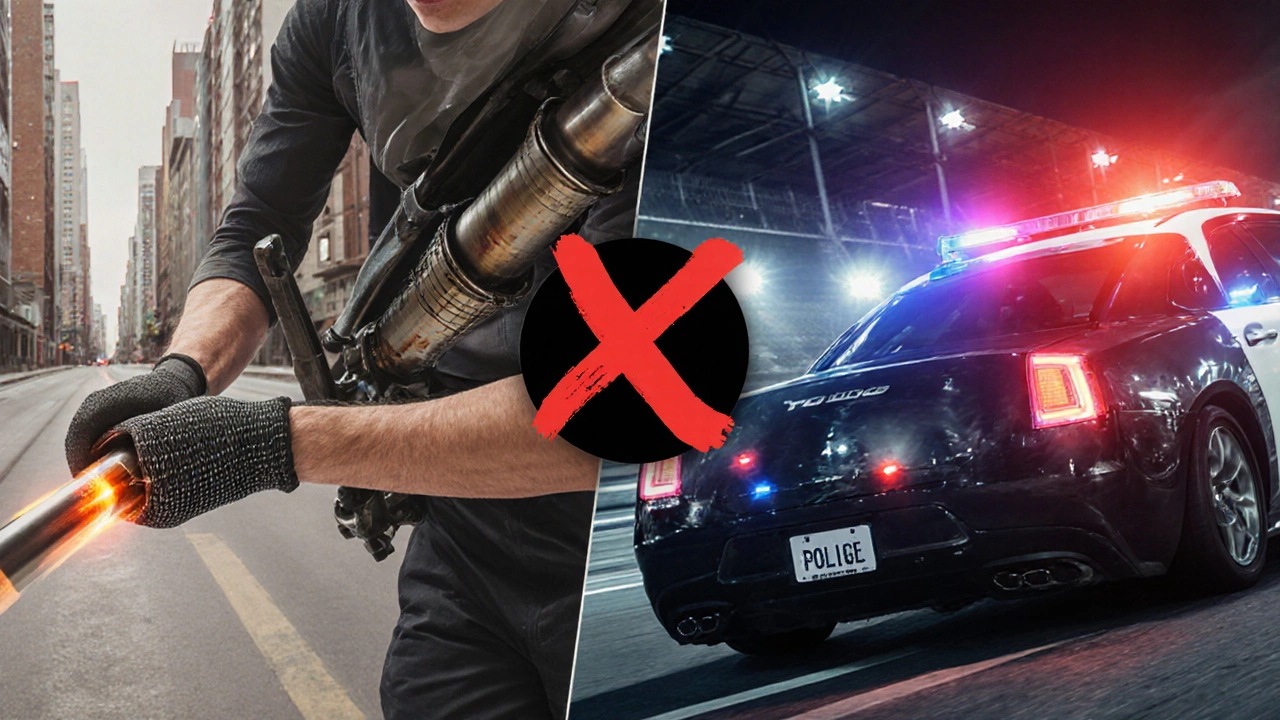
Pros and Cons at a Glance
- Pros
- Maximum exhaust flow → noticeable horsepower increase.
- Raw, aggressive sound that many enthusiasts love.
- Lightweight and simple construction.
- Cons
- Often illegal for street use (fails emissions and noise regulations).
- Increased noise can be tiring and may annoy neighbors.
- Potential for higher exhaust temperatures, affecting nearby components.
- Loss of low‑end torque in some engine configurations.
Frequently Asked Questions
Will a straight pipe make my car faster?
In most cases, yes - especially at higher RPMs. Removing restrictive components reduces backpressure, allowing the engine to breathe more freely and often adding 5‑15 % to peak horsepower. The effect on low‑end torque is less predictable and can sometimes feel weaker.
Is a straight pipe legal on public roads in Australia?
No. Australian Design Rules require a functional catalytic converter and that exhaust noise stay within prescribed limits. A straight pipe that removes the cat‑converter or exceeds the noise ceiling will fail a roadworthiness test and can result in fines.
Can I keep the catalytic converter and still have a straight pipe?
Yes, by installing a “cat‑back” straight pipe. This setup retains the factory catalytic converter, keeping the car emissions‑compliant, while still replacing the muffler and resonator for a louder note and modest power gains.
What pipe size should I choose?
A good starting point is 1.5‑2 times the diameter of your engine’s exhaust ports. For a 4.0 L V6, 2.5‑inch diameter works well; for a 6.0 L V8, 3‑inch or larger is common. Oversizing can reduce exhaust velocity and hurt low‑rpm torque.
"Will a straight pipe affect fuel economy?
Typically, fuel economy stays roughly the same or may drop slightly because the engine’s computer can lean out the mixture in response to lower exhaust pressure. The change is usually under 2 % and varies by driving style.
Bottom Line
If you love the raw sound of a racing car and are willing to keep the vehicle off public roads, a straight pipe can give you a noticeable horsepower bump and a head‑turning exhaust note. For street‑legal builds, a cat‑back straight pipe offers a compromise: you keep emissions compliance while still enjoying most of the performance and sound benefits. Always check local regulations, choose the right pipe diameter, and install heat shielding to protect surrounding components.
Next Steps for Enthusiasts
Consider these actions after reading:
- Assess whether your vehicle will be used on the street or track. If street‑legal is a must, plan for a cat‑back system.
- Visit a reputable exhaust shop for dyno testing to quantify potential gains on your specific engine.
- Research local emissions laws - some states have exemptions for race‑only vehicles.
- Pick a pipe material that matches your budget and aesthetic-stainless‑steel for durability, titanium for weight savings.
- Plan for regular maintenance: check for carbon buildup and ensure no heat damage to nearby parts.
By following these guidelines, you’ll make an informed choice that balances sound, power, and compliance.

